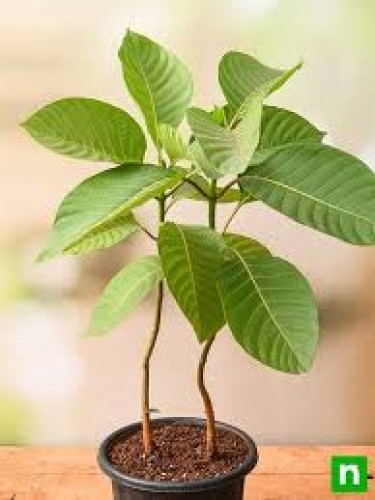60%
off
off
-
Sold
-

out
Kadamba Tree (Neolamarckia cadamba)
Botanical Features & Nature
- Scientific Name: Neolamarckia cadamba
- Common Names: Kadamba, Burflower Tree
- Family: Rubiaceae
- Origin: Native to South and Southeast Asia
- Height: Up to 45 meters
- Leaves: Large, glossy, and oval-shaped
- Flowers: Fragrant, orange-hued, globe-like clusters
- Fruits: Fleshy, yellow-orange capsules with numerous seeds
- Habitat: Thrives in tropical and subtropical climates; commonly found along riverbanks and in forests
Care & Cultivation
- Sunlight: Requires full sun to partial shade for optimal growth
- Soil: Prefers well-drained, fertile soils; adaptable to various soil types
- Watering: Regular watering is essential, especially during the establishment phase
- Fertilization: Apply a balanced fertilizer during the growing season
- Pruning: Periodic pruning helps maintain shape and remove dead or diseased branches
- Propagation: Can be propagated through seeds or vegetative cuttings
Uses & Benefits
Medicinal Applications
- Leaves: Used to treat wounds and skin conditions
- Bark & Roots: Employed in remedies for diabetes, diarrhea, and inflammation
- Flowers: Known for calming effects, aiding in stress reduction
- Fruits: Consumed to alleviate digestive issues and combat anemia
Environmental Significance
- Soil Conservation: Extensive root system helps prevent soil erosion
- Air Purification: Dense foliage acts as a natural air filter
- Biodiversity Support: Provides habitat and food for various wildlife species
Cultural Importance
- Mythological Associations: Linked to Lord Krishna and other deities
- Religious Practices: Considered sacred; often planted near temples and used in ceremonies
Advantages of Planting Kadamba
- Rapid Growth: Ideal for quick afforestation and providing shade
- Low Maintenance: Requires minimal care once established
- Multipurpose Use: Serves ornamental, medicinal, environmental, and cultural purposes
- Aesthetic Appeal: Enhances landscapes with lush foliage and fragrant flowers
- Hinduism: Associated with Lord Krishna; believed to be the site of his divine plays
- Festivals: Celebrated during festivals like Janmashtami; flowers offered in temples
- Symbolism: Represents love, devotion, and spiritual awakening